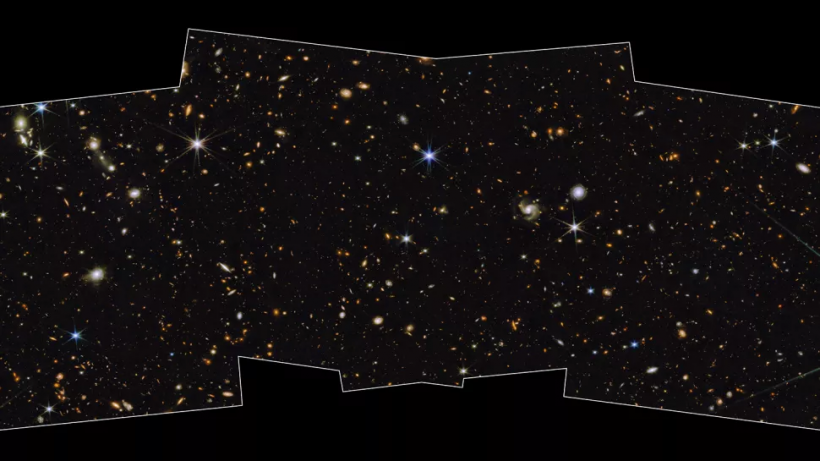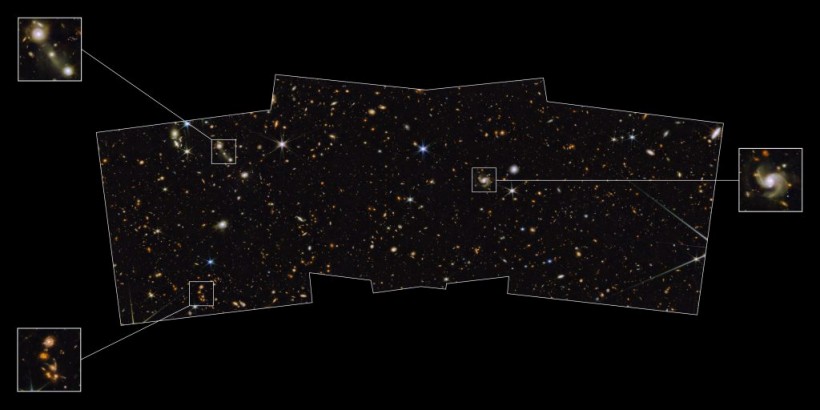NASA's James Webb Space Telescope polish up real nice with a new image "bejeweled" with exquisite galactic pearls and diamonds!
The North Ecliptic Pole is visible in one of the first medium-deep wide-field photographs of the universe, which was taken by Webb's mighty infrared vision.
The picture comes from the Prime Extragalactic Areas for Reionization and Lensing Science (PEARLS) GTO program and is an image that goes along with a paper published in the Astronomical Journal.

(Photo : NASA, ESA, CSA, A. Pagan (STScI) & R. Jansen (ASU). Science: R. Jansen, J. Summers, R. O’Brien, and R. Windhorst (Arizona State University); A. Robotham (ICRAR/UWA); A. Koekemoer (STScI); C. Willmer (UofA); and the PEARLS team.)
Medium-Deep Image
The faintest objects shown in this image, which are roughly 29th magnitude or 1 billion times fainter than what can be seen without the aid of a telescope, are referred to as "medium-deep."
Wide-field, on the other hand, refers to the program's overall coverage area, which is around one-twelfth the size of the full moon.
The image is made up of three hues of ultraviolet and visible light from the Hubble Space Telescope, along with eight different colors of near-infrared light from Webb's Near-Infrared Camera (NIRCam).
NASA explains that this bejeweled color image reveals a universe brimming with galaxies from the farthest reaches, many of which were previously unknown by Hubble or the largest ground-based observatories.
It also captured a plethora of stars inside our own Milky Way galaxy, in unparalleled detail and stunning depth.

(Photo : NASA, ESA, CSA, A. Pagan (STScI) & R. Jansen (ASU). Science: R. Jansen, J. Summers, R. O’Brien, and R. Windhorst (Arizona State University); A. Robotham (ICRAR/UWA); A. Koekemoer (STScI); C. Willmer (UofA); and the PEARLS team.)
Read Also: NASA's James Webb Space Telescope Discovers Rare Red Spiral Galaxies from the Early Universe
North Ecliptic Pole
This particular field of the sky can be observed at any time of the year. After all, it is not blocked by the sun as Webb orbits because it is located near the north ecliptic pole, according to Space.com.
Regular views enable Webb to monitor the emerging potential for time-domain astronomy, which focuses on the evolution of celestial objects over time.
The team will utilize the NIRCam observations along with spectra from Webb's Near-Infrared Imager and Slitless Spectrograph (NIRISS) to look for dim objects with spectral emission lines that may be used to determine the precise distances of these galaxies.
Astronomers behind the first PEARLS images said that they were completely blown away because of its gorgeous detail and depth.
"Little did I know, when I selected this field near the North Ecliptic Pole, that it would yield such a treasure trove of distant galaxies, and that we would get direct clues about the processes by which galaxies assemble and grow. I can see streams, tails, shells, and halos of stars in their outskirts, the leftovers of their building blocks," Rolf Jansen, Research Scientist at ASU and a PEARLS co-investigator said in a statement.
According to Jake Summers, an ASU research assistant, the Webb photos exceeded what the team had predicted from their calculations before the official science observations.
Jansen hopes that this field will be observed by Webb throughout its mission to spot any objects that move, change in brightness, and flare rapidly.
Related Article: NASA's James Webb Space Telescope Snaps a Chaotic, Disturbing Connection Between Two Galaxies









